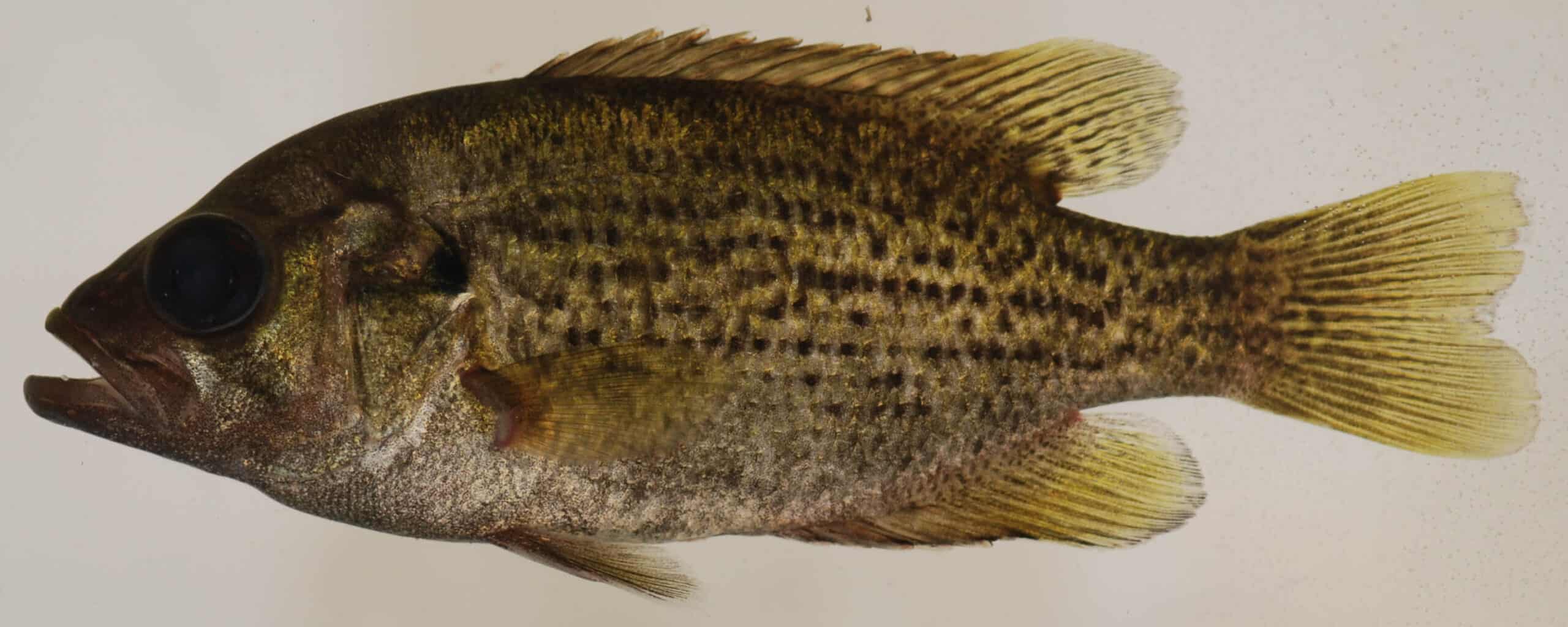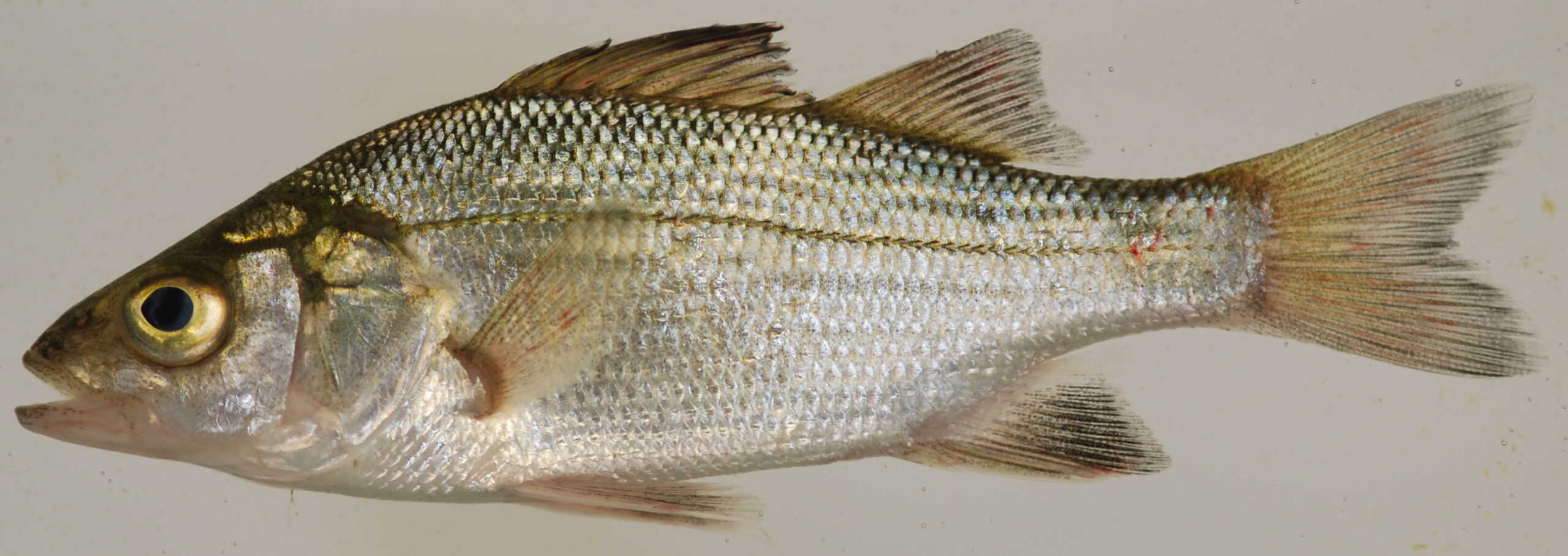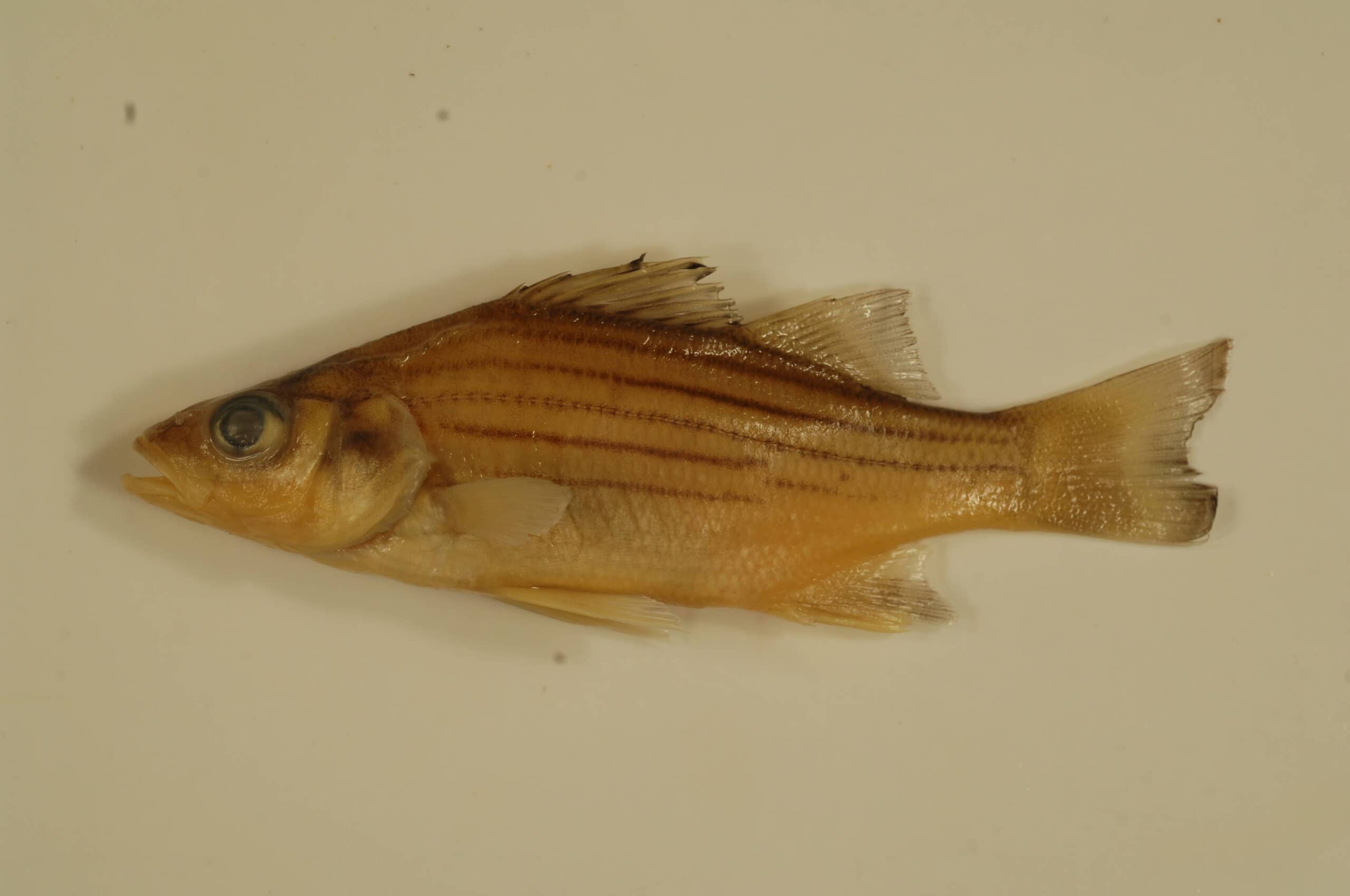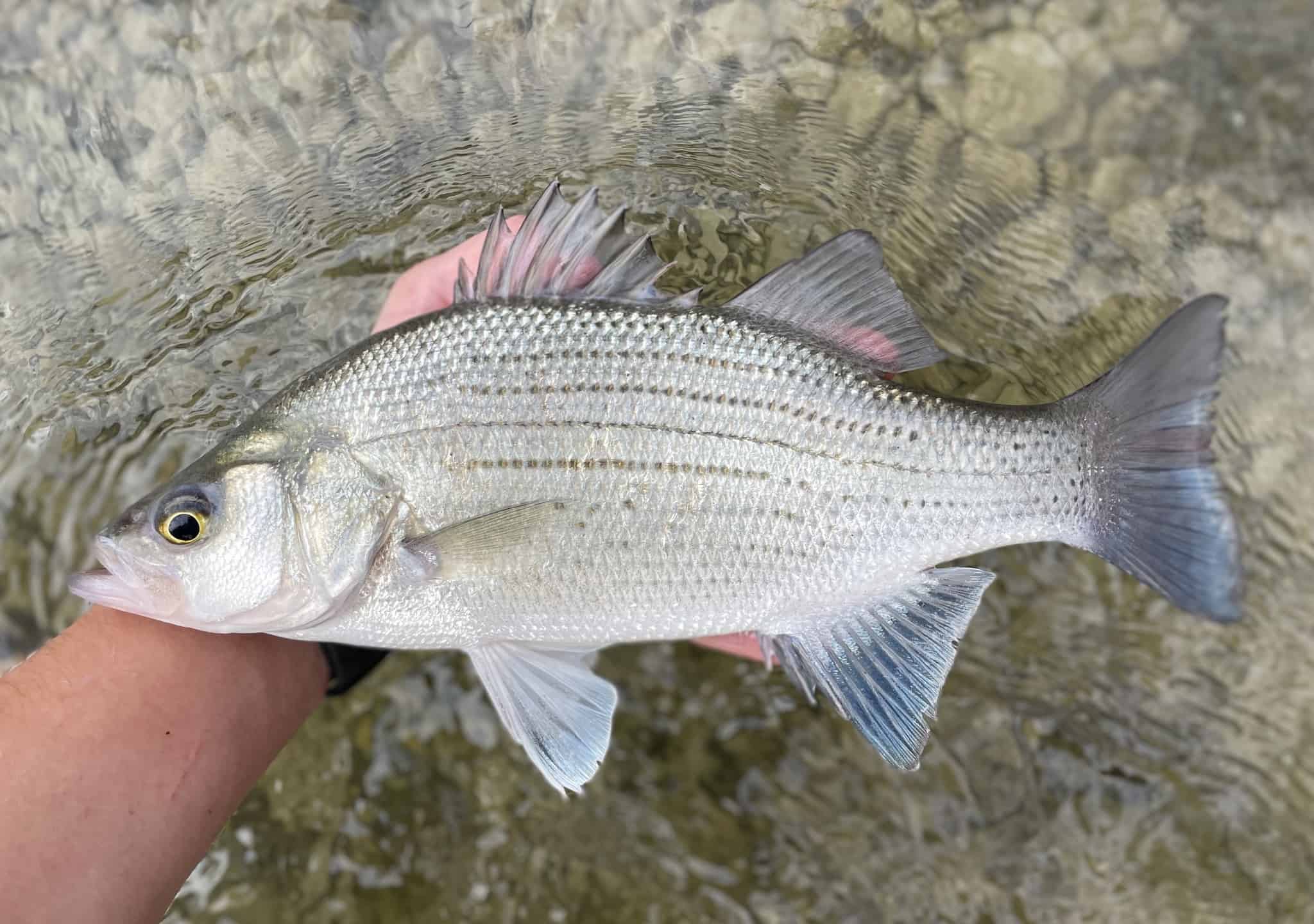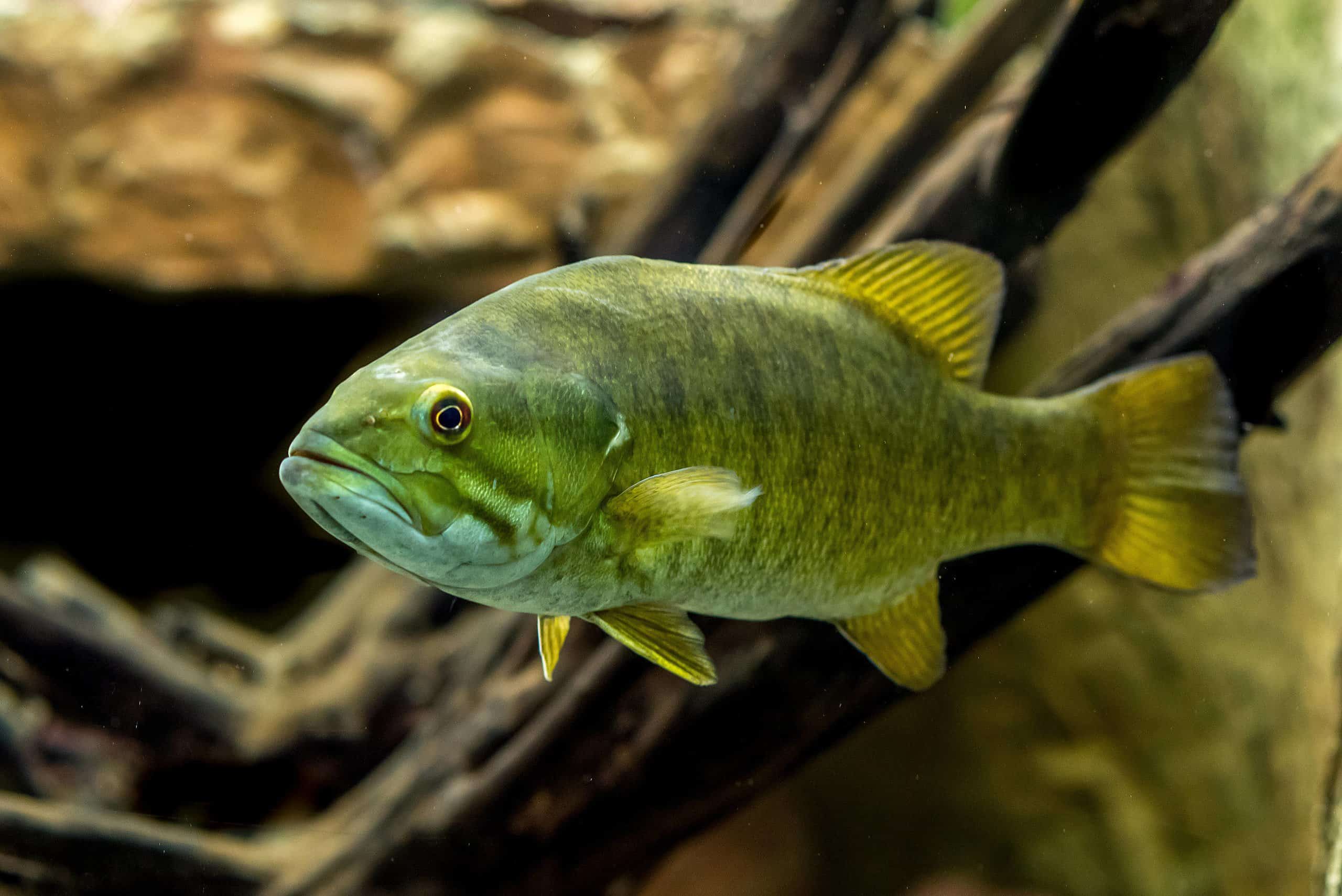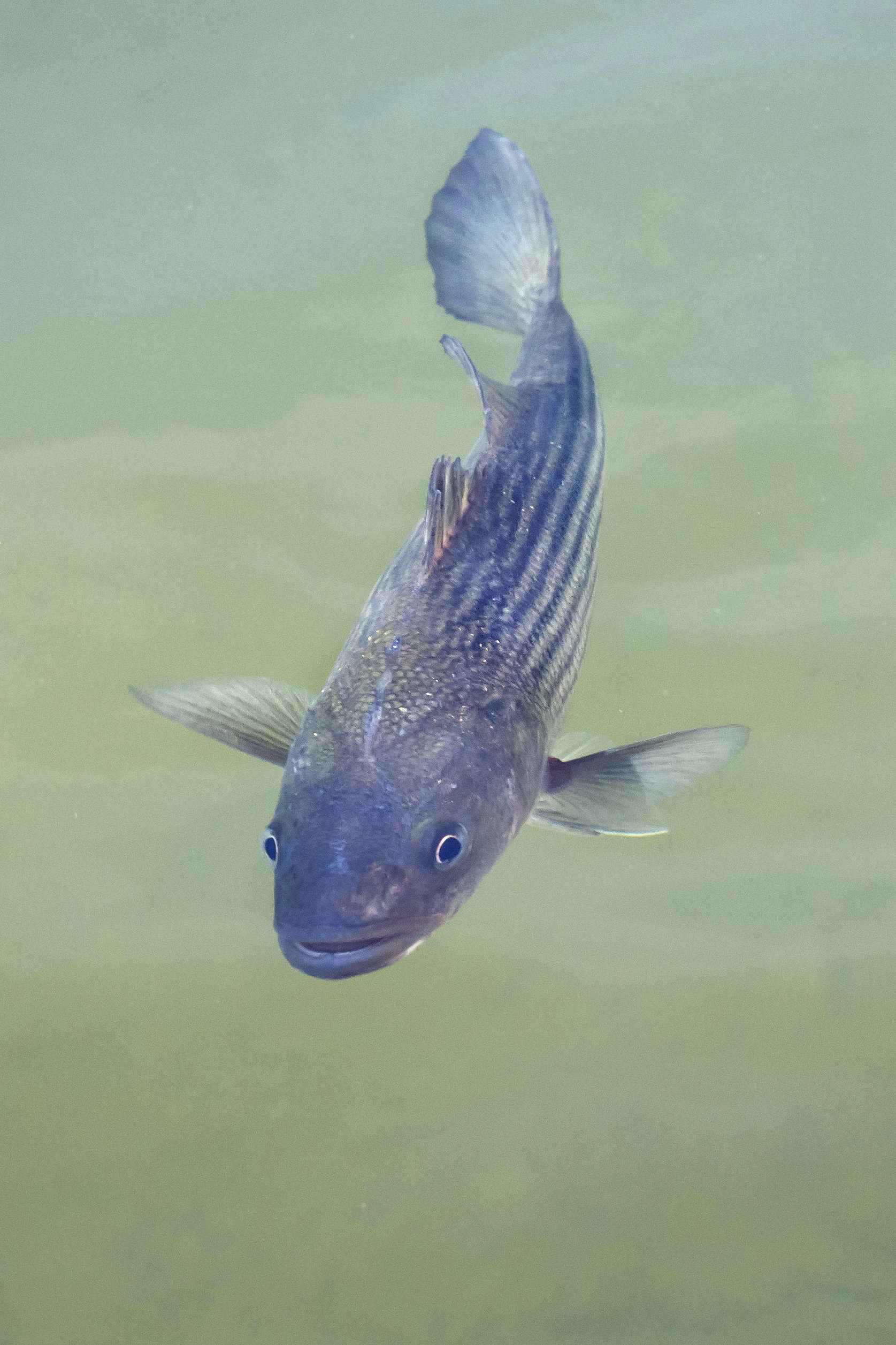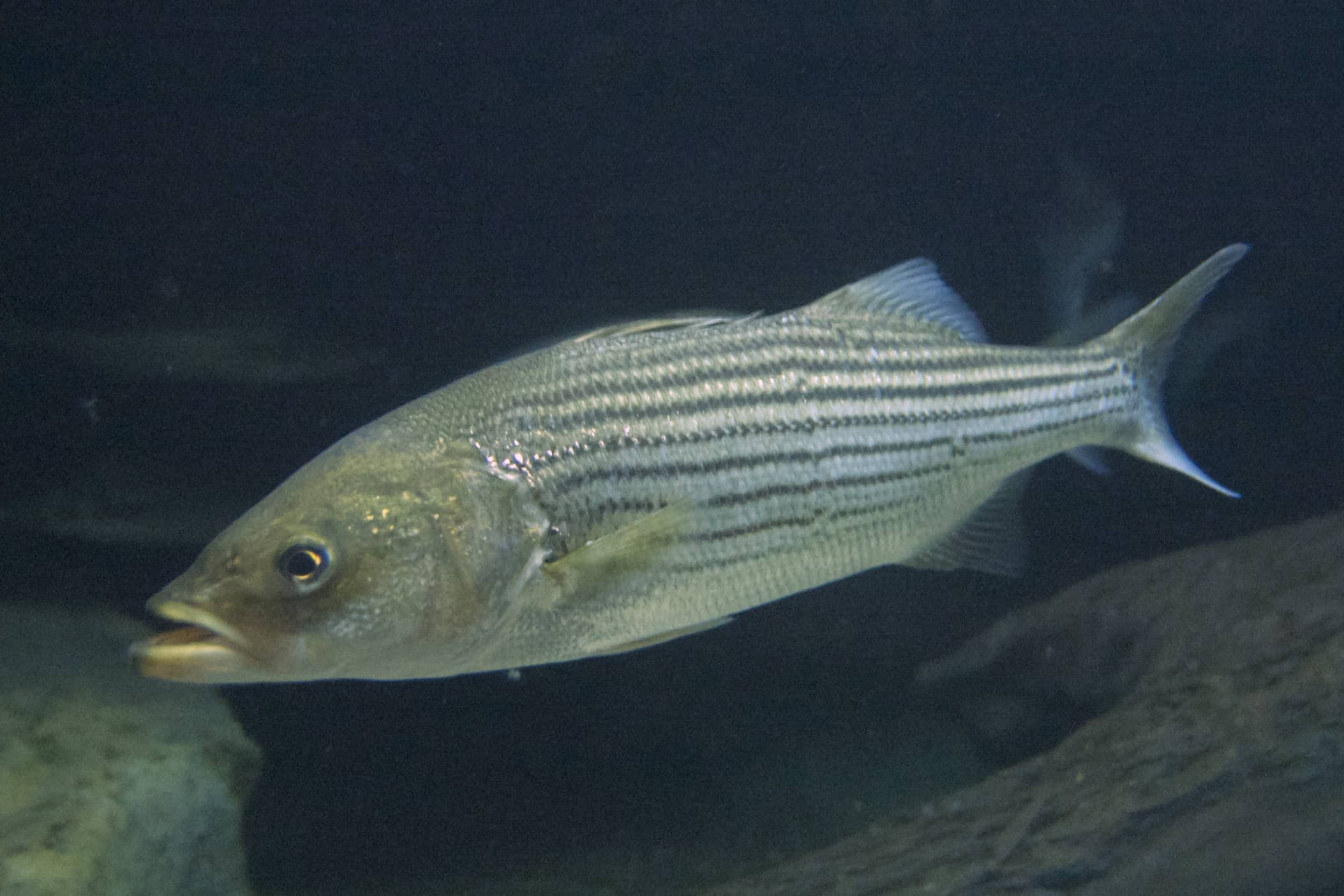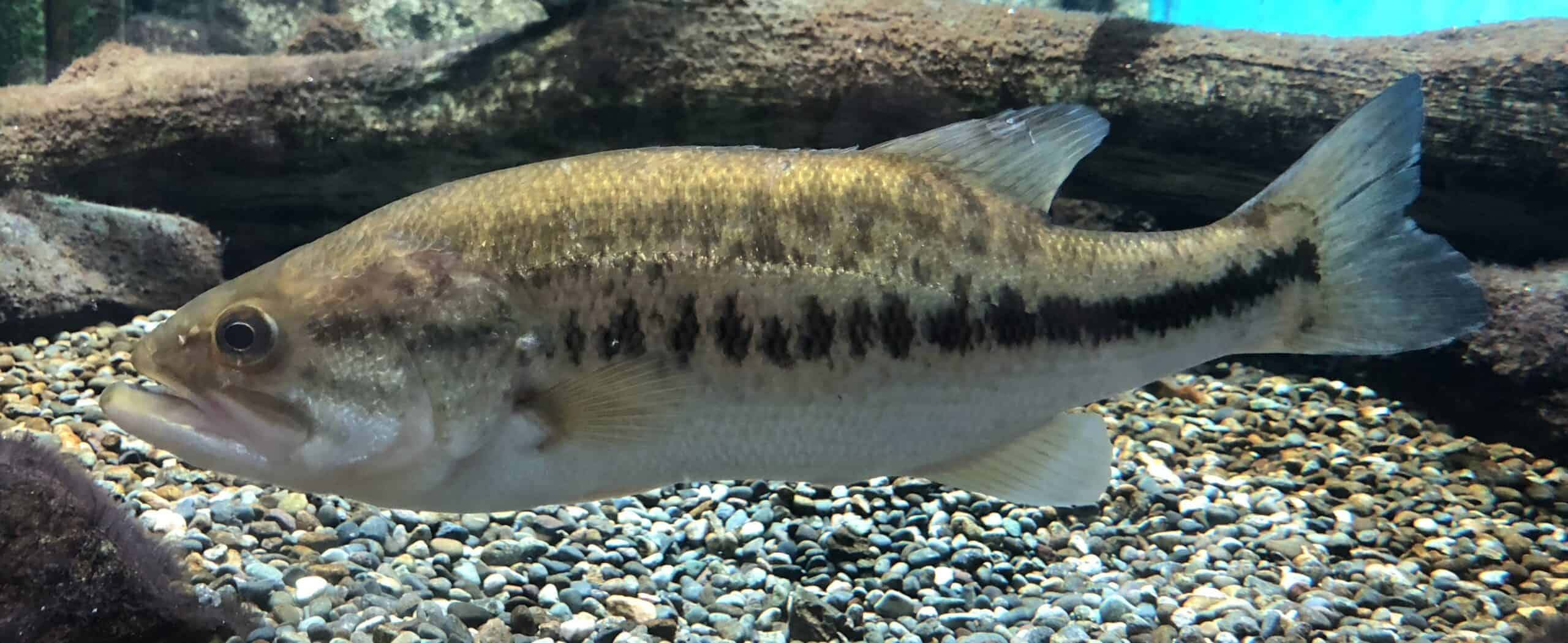

According to a 2023 report from the American Sportfishing Association, there are 52.4 million recreational fishermen and fisherwomen in the United States. The sportfishing industry provides $148 billion in economic output and supports 945,500 American jobs. It also contributes $1.8 billion toward conservation efforts. There are more recreational anglers in the U.S. than golfers and tennis players combined. When these millions of anglers grab their tackle boxes and head for the water, they often dream of hooking into a big bass. Here’s a look at some of the largest bass ever caught in the U.S. These fish range from a couple of pounds to over 80 pounds! (And if you have a taste for fish but would rather hold a menu than a rod and reel, here’s a list of the best seafood restaurants in every state.)
There are several different bass species. Additionally, there are plenty of fish with a common “bass” name that are not bass, at all. The whole thing can become very confusing, very quickly. To simplify matters, we’re including fish in our list that are typically referred to as bass, whether they are true basses or not. We’ll note the differences along the way, though. We want to keep George Costanza and all the other marine biologists happy.
The International Game Fish Association (IGFA) is widely regarded as sport fishing’s governing body. Along with its far-reaching conservation efforts, the organization verifies and documents world-record fishing catches. The information for the record-setting fish listed below was sourced exclusively from the IGFA website. Each of the following U.S. records is also a world record unless otherwise noted.
Spotted Bass
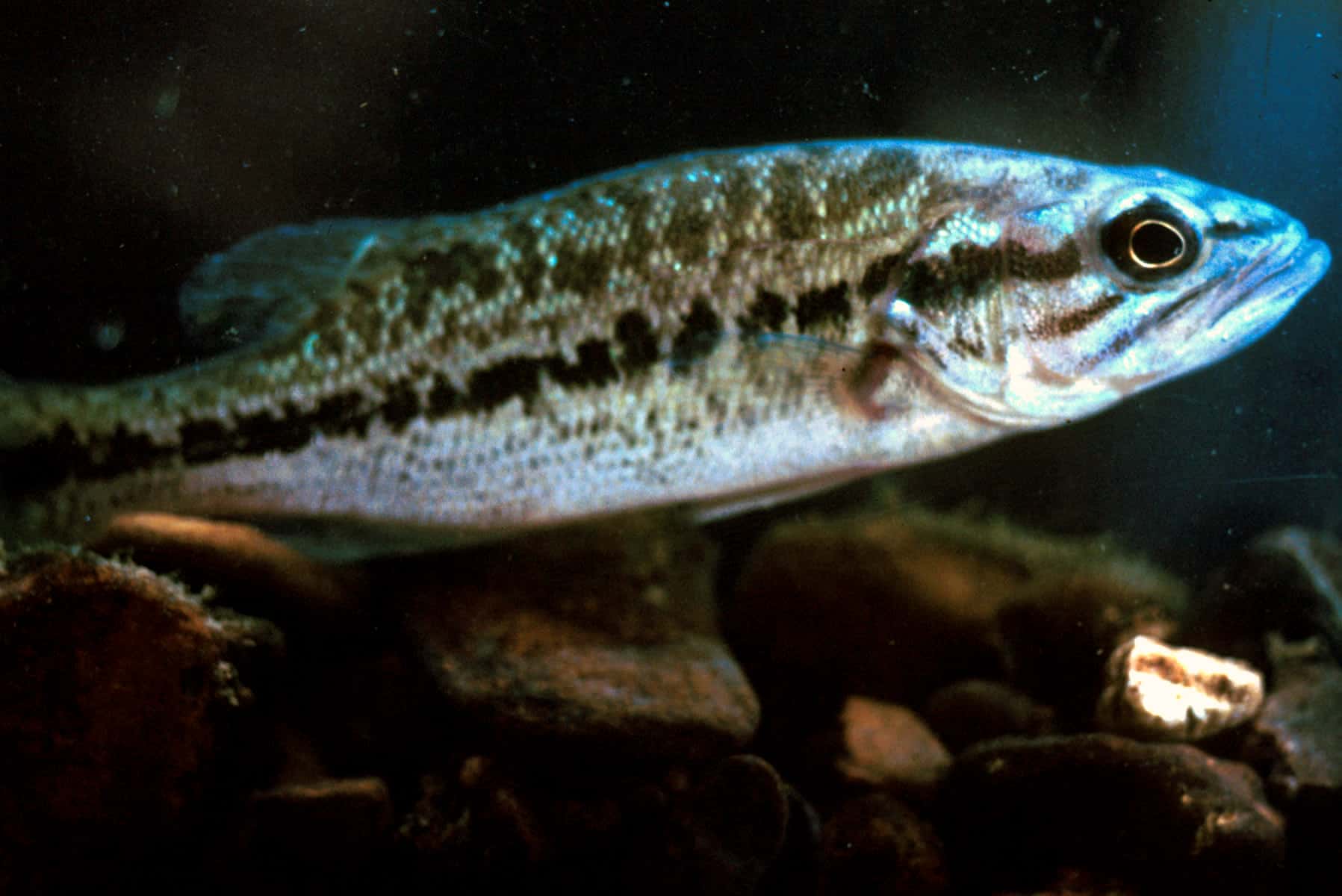
- World-Record Weight: 2 pounds, 4 ounces
- Angler: Arthur Weston
- Date: April 18, 2023
- Location: Trinity River, Texas
The spotted bass (Micropterus punctulatus) is also known as the Kentucky bass. It was named the state fish of Kentucky in 1956. The world-record spotted bass was not caught in Kentucky, though. Art Weston landed the record-setting fish in Texas.
While a 2-pound, 4-ounce fish may not seem like much of a record, it’s important to remember that spotted bass typically only grow to around 12 inches long and weigh one pound or less. Plenty of anglers claim to have caught spotted bass weighing 3, 4, 5 pounds or more, but those fish were almost certainly not true spotted bass. Species such as Alabama bass are often confused with spotted bass. More on Alabama bass later.
The spotted bass is not a true bass but rather is a member of the sunfish (Centrarchidae) family, as are several other bass species on this list. These fish, colloquially known as “spots” or “spotties,” feature a spotted pattern along their sides, which helps anglers differentiate them from other species such as largemouth and smallmouth bass.
The spotted bass’ native range extends from central Ohio and Indiana south to Alabama and stretches as far west as central Oklahoma and Texas. The fish has also been introduced in several states outside its native range.
Rock Bass
- World-Record Weight: 3 pounds, 0 ounces (tie)
- Angler: Herbert Ratner, Jr.
- Date: June 18, 1998
- Location: Lake Erie, Pennsylvania
The rock bass (Ambloplites rupestris) is also a sunfish and not a true bass. The fish is an aggressive feeder and is typically easy to catch. Children fishing with a worm and bobber often catch rock bass.
These fish typically grow to a maximum length of ten inches and weigh around one pound. The fish usually has an orange or red eye, giving it the nickname “red eye.”
As its name suggests, the rock bass often prefers to hide from predators under the cover of rocks or other structures. These structures also provide an ambush point from which the rock bass can strike its own prey. The rock bass can also change color to blend in with its surroundings.
The rock bass’ native range in the U.S. extends from the Great Lakes in the north to Florida in the south, stretching as far west as Arkansas. Herbert Ratner, Jr. holds the U.S. rock bass record and a tie for the world record. Peter Gulgin caught the original world record rock bass, weighing 3 pounds even, on August 1, 1974, on the York River in Ontario, Canada.
Narrow-Mouthed Bass (White Perch)
- World-Record Weight: 3 pounds, 8 ounces
- Angler: Val Percuoco
- Date: October 16, 2016
- Location: Wachusett Reservoir, Massachusetts
As noted earlier, fish nomenclature can be confusing. Case in point, the fish that is most commonly known as the white perch is not a perch, at all. It is a bass. A more accurate, but lesser-used name for the fish is the narrow-mouthed bass.
This fish is a member of the temperate bass family. Temperate bass are also known as “true bass,” unlike many other common “bass” that are actually sunfish. Again, it can be quite confusing.
Setting aside the biology class lecture, the narrow-mouthed bass (Morone americana) is native to the Atlantic coastal region in the U.S. It is classified as semi-anadromous, meaning the species moves between estuarine and fresh waters to spawn.
The narrow-mouthed bass typically remains small, only growing to around seven inches long and weighing less than a pound. The 3-pound, 8-ounce record fish caught in Massachusetts in 2016 was truly a monster for this species.
This bass was unintentionally introduced into the Great Lakes through the Erie and Welland canals. The fish is now established in all five of the Great Lakes. It has also invaded the Ohio River and has been illegally stocked in lakes
Outside of its native coastal range, the narrow-mouthed bass (or white perch) is a destructive invasive species. Its ability to thrive in both salt and freshwater gives it a decisive advantage. A white perch will aggressively feed on the eggs of native fish, such as walleye. It also hybridizes with white bass, diluting the gene pool of the native fish.
If you catch a white perch outside of its native range, do not throw it back. Removing the fish is far better for the ecosystem. As an added bonus, these panfish are delicious. Instead of throwing it back, have a fish fry. You and the environment will both be happier.
Yellow Bass
- World-Record Weight: 4 pounds, 5 ounces (final record verification pending)
- Angler: Jason (Andy) Ault
- Date: April 15, 2023
- Location: Morse Reservoir, Indiana
The yellow bass (Morone mississippiensis) is another true bass. It is named for its distinctive gold/yellow color. This bass is native to the Lake Michigan and Mississippi River basins (hence its binomial name). Its range stretches from Wisconsin and Minnesota to the Gulf of Mexico. It ranges from Tennessee in the east to Iowa and Oklahoma in the west.
These bass are popular for family fishing trips since kids can easily catch these little fish. Yellow bass are often confused with yellow perch, but there is an easy way to tell them apart. The yellow bass has thin horizontal stripes that run along its sides. The yellow perch features thick vertical stripes on its body.
Yellow bass typically remain small. A one-pounder may be considered a trophy. Andy Ault’s catch of a 4-pound, 5-ounce “brassy bass” is absolutely insane.
Ault is awaiting the final IGFA acceptance of his catch from April of this year. When it is officially verified, Ault’s catch will shatter the old record of 2 pounds, 9 ounces set by John Chappell in Tennessee in 1998.
White Bass
- World-Record Weight: 6 pounds, 13 ounces (tie)
- Anglers: Ronald Sprouse and Corey Crochet
- Dates: July 31, 1989 (Sprouse) and August 27, 2010 (Crochet)
- Locations: Lake Orange, Virginia (Sprouse) and Amite River, Louisiana (Crochet)
The white bass (Morone chrysops) is a true bass. It is named for its silvery-white appearance. Chrysops in the species epithet means “golden eye,” referring to the fish’s distinct gold eye color.
A mature white bass typically weighs 1-2 pounds and measures around 12 inches long. Pound for pound, the white bass is among the hardest-fighting freshwater fish in the U.S. Even when these fish are small, they can give you quite a battle if you are fishing with light tackle.
The white bass’ native range stretches from Quebec, Ontario, and Manitoba in the north to Louisiana and Texas in the south. The fish has also been introduced in areas well beyond its original range. The white bass was designated as Oklahoma’s state fish in 1974, recognizing its ecological importance in the Sooner State.
White bass can hybridize with striped bass, though it rarely occurs in the wild. Instead, hybrid striped bass (or wipers, combining the names of white bass and striped bass) are often stocked by fisheries. These hybrid fish generally cannot reproduce, so the gene pool of the white bass is not threatened when they are introduced into a body of water.
Alabama Bass
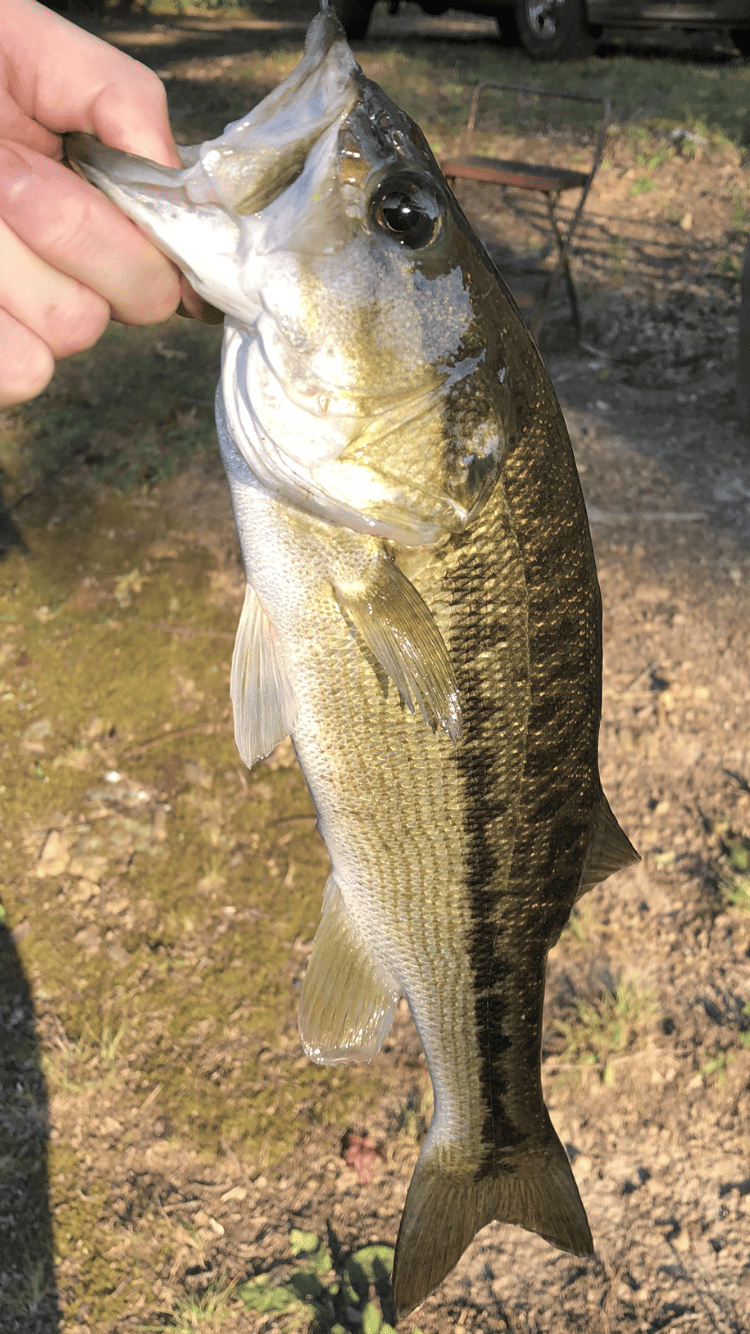
- World-Record Weight: 11 pounds, 4 ounces
- Angler: Nick Dulleck
- Date: February 12, 2017
- Location: New Bullards Bar Reservoir, California
As noted earlier, the Alabama bass (Micropterus henshalli) is often mistaken for the spotted bass. The Alabama bass was originally classified as a subspecies of the spotted bass, but further genetic study revealed that the fish is actually a separate species altogether. The Alabama bass was officially listed as its own species in 2008.
While the Alabama bass can look quite similar to a true spotted bass, one of the major differences between the two is their maximum size. The Alabama bass can grow quite a bit larger than the spotted bass. Look no further than the world records. The world record spotted bass weighed 2 pounds, 4 ounces, while the record Alabama bass was five times that size at 11 pounds, 4 ounces.
The Alabama bass is native to the Mobile River basin in Alabama, eastern Mississippi, and northwestern Georgia. It has been introduced in Texas and California to the west, and in Tennessee, Virginia, North Carolina, and South Carolina to the east.
The Alabama bass is a fierce predator and often outcompetes other species for food. The fish also readily hybridizes with spotted and smallmouth bass. This hybridization can quickly eliminate pure native bass species from a body of water. The Alabama bass is considered an invasive species in many areas outside its native range.
Smallmouth Bass
- World-Record Weight: 11 pounds, 15 ounces
- Angler: David Hayes
- Date: July 9, 1955
- Location: Dale Hollow Lake, Tennessee
The world record smallmouth bass (Micropterus dolomieu) was caught in Tennessee in 1955. Fifty years later, it was named the official sport fish of the state. Tennessee legislators designated the smallmouth bass as their state’s official sport fish in 2005, replacing the largemouth bass which had been the state sport fish since 1988.
The smallmouth bass is one of 13 species of black bass. Spotted bass, Alabama bass, and largemouth bass are also black bass species.
Smallmouths are native to eastern North America, but the fish has been introduced far beyond its original range. It was stocked as far west as California by 1874. While this introduction effort was well-intentioned, it did have some deleterious effects. Smallmouths are apex predators and can outcompete native fish populations.
The smallmouth bass is so named because of its relatively small mouth, especially when compared to the oversized gape of the largemouth bass.
“Smallies” are among the most highly-prized gamefish in the U.S. They are hard-fighting fish and make excellent table fare.
Largemouth Bass
- World-Record Weight: 22 pounds, 4 ounces (tie)
- Angler: George Perry
- Date: June 2, 1932
- Location: Montgomery Lake, Georgia
The largemouth bass (Micropterus salmoides) is the most popular freshwater game fish in the world. It is the state fish of Georgia and Mississippi, and the state freshwater fish of Alabama and Florida.
The largemouth bass’ native range was largely confined to eastern North America, but that original range is just a distant memory. This highly adaptable fish can thrive in ponds, lakes, streams, rivers, and even estuaries. The largemouth bass is now one of the most widely distributed freshwater fish in the world due to its unequaled popularity among anglers.
Today, largemouth bass swim in every U.S. state except Alaska. Along with 49 American states, the fish is also now found in Brazil, China, Colombia, Croatia, Cuba, Fiji, France, Germany, Guam, Guatemala, Honduras, Hungary, Italy, Japan, Kenya, Lebanon, New Zealand, the Philippines, Portugal, Puerto Rico, Serbia, South Africa, South Korea, Spain, Russia, and Zimbabwe. This overzealous stocking of largemouth bass has led to ecological problems in many of these places. The largemouth bass may be beloved by millions of fishermen and fisherwomen, but it is now a destructive invasive species in many parts of the world.
The largemouth bass is the biggest of all the black bass species. Its eponymous large mouth is the fish’s most distinctive feature. Because of its disproportionately large mouth, the fish can prey on animals and fish up to 50% of its own size.
An average mature largemouth can grow 10 to 20 inches long and weigh one to five pounds. Under the right conditions, though, this fish can grow far larger than that.
There are two subspecies of largemouth bass: the Florida largemouth (Micropterus s. floridanus) and the northern largemouth (Micropterus s. salmoides). They look identical and can only be identified biochemically. However, under the right conditions, the Florida largemouth can grow far larger than the northern largemouth. The world record largemouth bass was almost certainly a Florida largemouth.
Speaking of that record, George Perry, a young farmer in Depression-era Georgia, landed the record-setting 22-pound, 4-ounce behemoth while fishing to provide food for his family. Perry caught this monster bass in 1932, seven years before IGFA was founded, but his record catch was grandfathered into the record books. Over 91 years later, it remains the biggest largemouth bass ever documented in the U.S. It also stood alone in the world record book until 2009.
Manabu Kurita landed a gigantic largemouth on Lake Biwa in Japan. Largemouth bass were introduced to Japan in 1925. The fish is now considered an invasive species by Japanese fishery officials. The bass has particularly thrived in Lake Biwa.
Kurita’s fish weighed 22 pounds, 4.97 ounces, nearly one ounce heavier than Perry’s fish. However, IGFA rules state that a new record fish must outweigh the old record by at least two ounces. Officially, Kurita’s lunker largemouth is listed as a tie with Perry’s bass from 1932.
Striped Bass (landlocked)
- World-Record Weight: 69 pounds, 9 ounces
- Angler: James R. Bramlett
- Date: February 28, 2013
- Location: Black Warrior River, Alabama
The striped bass (Morone saxatilis) is a temperate (true) bass native to the East Coast of North America, from the St. Lawrence River in Canada to St. John’s River in Florida, and in the Gulf of Mexico from Florida to Louisiana. It is an anadromous fish that migrates from saltwater to freshwater for spawning.
Striped bass have been introduced into the Pacific waters and are now found from British Columbia to Mexico. Because the fish can thrive in both salt and freshwater, it has also been stocked in many inland lakes and reservoirs.
Striped bass are named for the seven or eight horizontal stripes along its sides. “Stripers” are very popular sport fish. Numerous states of given the striped bass official status. It is the state fish of Maryland, Rhode Island, and South Carolina. The striped bass is also the official marine (saltwater) fish of New York and Virginia, and the state saltwater game fish in New Hampshire and New Jersey.
The striped bass is easily the largest of the temperate (true) basses. Because of the striped bass’ widespread popularity, and because it can thrive in both salt and freshwater, the fish has been introduced into many inland waters. Landlocked striped bass typically do not grow as large as those that have access to the ocean, so IGFA created two distinct records for the fish.
The largest landlocked striped bass ever caught weighed 69 pounds, 9 ounces. James Bramlett landed that beast while fishing in Alabama’s Black Warrior River.
Striped Bass (non-landlocked)
- World-Record Weight: 81 pounds, 14 ounces
- Angler: Gregory Myerson
- Date: August 4, 2011
- Location: Long Island Sound, Westbrook, Connecticut
The world record non-landlocked striped bass weighed a whopping 81 pounds, 14 ounces. Both the landlocked and non-landlocked “striper” records were set fairly recently. There is a chance either record could be broken in the future, but the non-landlocked record seems especially likely to fall.
IGFA only documents records of fish that were caught with a rod and reel. While 81 pounds, 14 ounces is the current world record, it should be noted that bigger striped bass have been documented.
In 1995, scientists caught a striped bass that weighed 92 pounds. The fish was caught in a net in the Chesapeake Bay. However, over a century before that catch, two commercial fishermen from North Carolina netted a 125-pound striped bass in 1892.
Considering these eye-popping numbers, it seems like only a matter of time until there is a new rod-and-reel record for striped bass on the books.
Sponsored: Find a Qualified Financial Advisor
Finding a qualified financial advisor doesn’t have to be hard. SmartAsset’s free tool matches you with up to 3 fiduciary financial advisors in your area in 5 minutes. Each advisor has been vetted by SmartAsset and is held to a fiduciary standard to act in your best interests. If you’re ready to be matched with local advisors that can help you achieve your financial goals, get started now.
Thank you for reading! Have some feedback for us?
Contact the 24/7 Wall St. editorial team.
